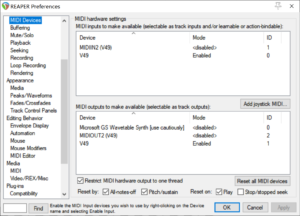Here are some resources for creating scripts/programs for the Reaper digital audio workstation:
AdmiralBumbleBee.com – ReaScript Tutorial – From total beginner to GUI-based script
ExtremeRaym – Raymond Radet’s website, author of ReaScript tutorial series, package of ReaScripts, and has a Github repo of scripts (also this one)
ReaPack.com – Package manager for Reaper
Cockos Forum – Building a GUI in Lua
Adam T. Croft – Introduction to ReaScript (I did the “Hello World” section, and it worked!)
ReaperBlog – ChordGun tool
SWS Extension – another Reaper tool
Reaper – ReaScript page (also ReaScript API page)
This ought to be enough to get me started! I want to create some functions to do computer-assisted composition…
